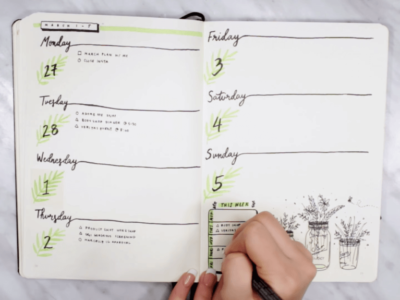Ever come across the term “bullet journaling”? You may already have some experience with bullet journaling or maybe you’ve never heard of it. Perhaps you feel struck with existential terror at the words “artistic talent.” Don’t stress. Allow me to offer you some ideas on how to incorporate the bullet journal into your life as a college student.
Want to simplify your insanely crazy college to-do list? Learn how to start a bullet journal ASAP.
What is a bullet journal?
Bullet journaling essentially offers a way to organize your entire life in one notebook. A bullet journal functions as an all-in-one planner, to-do list and diary. Why not just buy a planner or a regular journal? While keeping a separate planner, to-do list and diary can take a lot of time and effort, a bullet journal relies on rapid logging to minimize and consolidate information, saving you all that work. You can also reorganize the layout of the bullet journal however you want to fit your specific needs. Many rely on dot grid pages rather than lined pages.
“I started using planners when I went off to college because I needed a place to keep all my important info about my schedule, classes, assignments and deadlines,” said Cristina Tamas. Tamas created My Life in a Bullet, a website dedicated to all things BuJo. “I soon found that regular planners were too limiting. They came in pre-formatted layouts that didn’t always work for my dynamic schedule, and I had no room for ideas, journaling, lists, doodles, etc. I was in need of flexibility.” Bullet journals, unlike traditional notebooks, give you the freedom to focus on what matters most to you.
“I think the main reason for the bullet journal’s popularity is its accessibility, because all you need is a notebook and a writing tool,” said Tamas. “Whether you’re a minimalist or a creative spirit, organized or messy, have five or 500 minutes to spend for planning, there’s a way to make it work for you.”
Looking at pictures of extravagant bullet journals on Pinterest or Instagram can feel intimidating. Remember that those spreads were designed to look Insta-worthy. “I think one of the biggest misconceptions about the bullet journal is that it has to be all pretty and decorated and you have to have all these crazy supplies,” said Tamas. “This misconception probably stems from the fact that so many people use the bullet journal as a creative outlet as well, and so many of them share their spreads on social media—myself included.” Your journal shouldn’t create added stress in your life. It’s for you and no one else. Design your journal in a way that makes you happiest.
What kinds of things go in a bullet journal?
You can put literally anything you want in there. Some people use a bullet journal to organize their average day-to-day or month-to-month without focusing specifically on any one aspect of their lives. These journals are usually organized by date and include a lot of monthly, weekly and daily layouts. Within these spreads you can also choose to include things like your monthly or weekly goals, daily to-do lists, event calendars, etc. Here’s what those might look like:
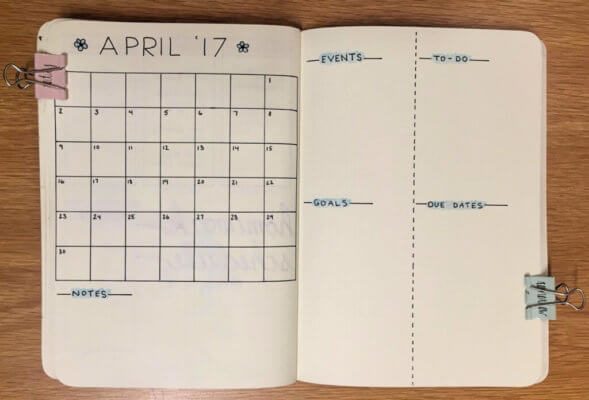
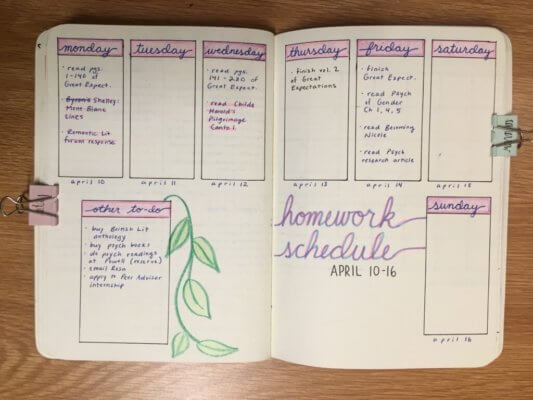
Others might track specific things like their mental health, physical fitness, finances or event planning. You’ll probably still organize these kinds of bullet journals chronologically. But they’ll focus more on whatever trend you choose to track than the actual date.
“[My bullet journal] truly does help me with almost every area of my life. It’s my number one personal development tool,” said Tamas. “I’ve also talked with a lot of people who use their bullet journals to cope with their depression, anxiety and other mental illnesses.” Laying out your personal goals, accomplishments and ideas in a way that’s aesthetically pleasing can help you make sense of the things going on in your life and remind you that you’re worth the time it takes to make your bullet journal your happy place. Not sure what I mean?
Check out some examples of bullet journaling:
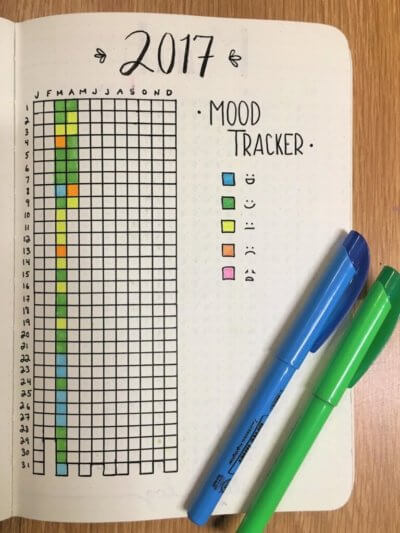
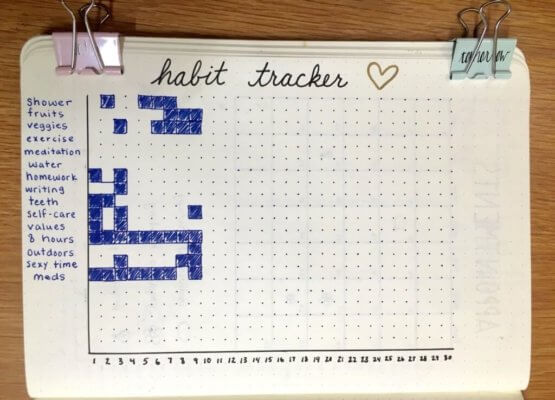
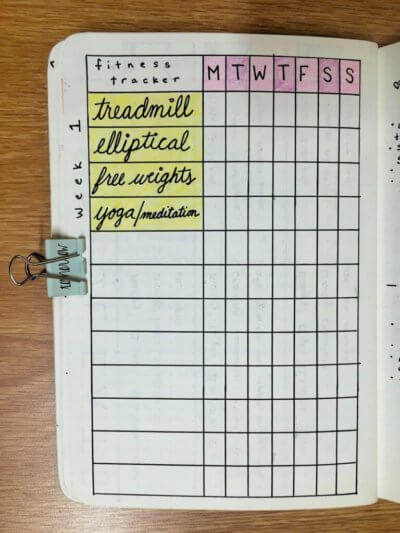
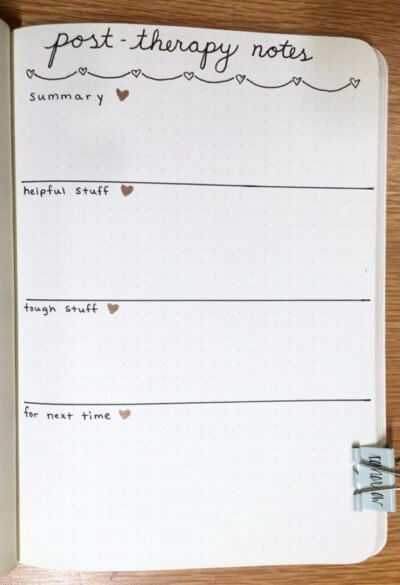
Now gear your bullet journal towards your college life.
College gets crazy hectic before the first week of classes is even over. You have courses, homework and extracurriculars to worry about, and on top of that you might also juggle a job or internship, pay rent or have any number of other responsibilities. Before you let all of that overwhelm you, consider building a bullet journal to keep track of all your obligations as a student. You might want to include:
1. Your weekly class schedule for that quarter/semester.
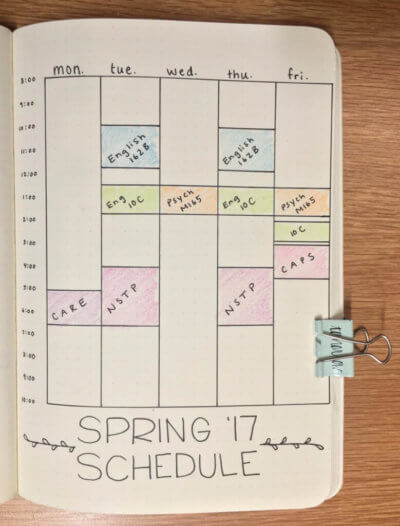
You can probably access it online, but it doesn’t hurt to have your schedule written down somewhere easily accessible. This doesn’t just have to be for classes, either. Any weekly time commitments that are set in stone can be put into this schedule.
2. A list of required textbooks.
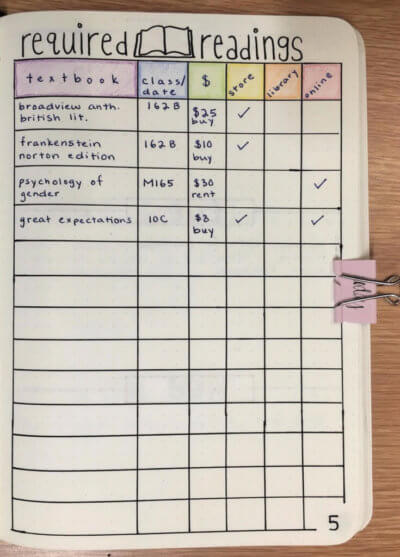
If you’re anything like me, you’ll forget to order your class textbooks until the day the assignment’s due. This spread shows you what date you need your textbooks by and lets you check them off as you order them. It’ll also tell you which books are available in your school library, so you know what you need to buy and what you don’t.
3. A lecture note spread.
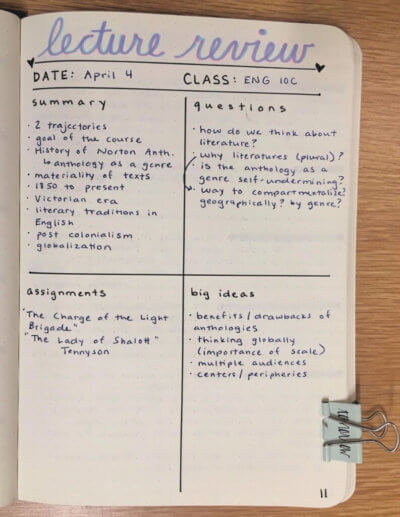
The idea is to minimize the amount of space it takes to write down information in a way that clarifies (not confuses!) that information. This format will help you identify the broader themes of whatever courses you’re taking, which will ultimately help you study for your midterms and final exams.
For the STEM people, consider setting aside 5-10 pages of your bullet journal for a study guide where you can include formulas, theorems, key concepts and examples. Come back to it after each lecture or each week and add whatever ideas you learned in class. That way, you don’t have to craft a study guide the weekend before your exam—you’ll find it all beautifully arranged for you in your bullet journal.
4. A four-year plan.
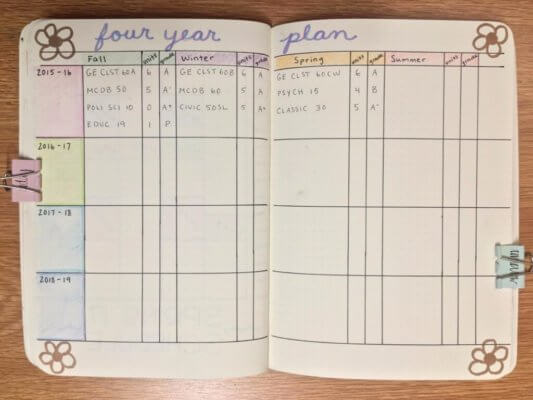
Your academic counseling unit probably has a four-year plan worksheet available for you online. But that’s not specific to you. A four-year can include all the classes you’ve already taken, what grades you got in them, how many units you earned from each class and what requirements you still have left to satisfy. Even better? Keeping track of what you’ve done and what you still need to do can help remind you that all your effort is going towards something real.
5. Other crap you care about.
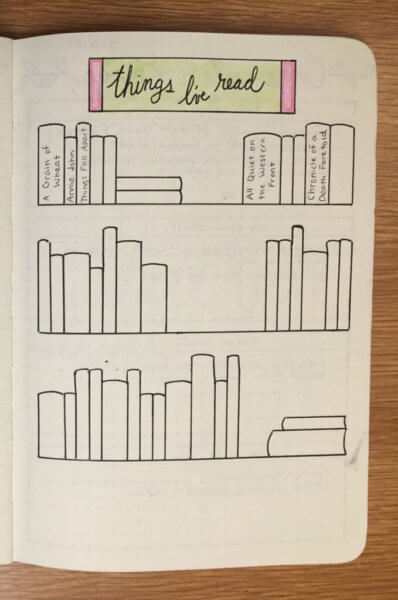
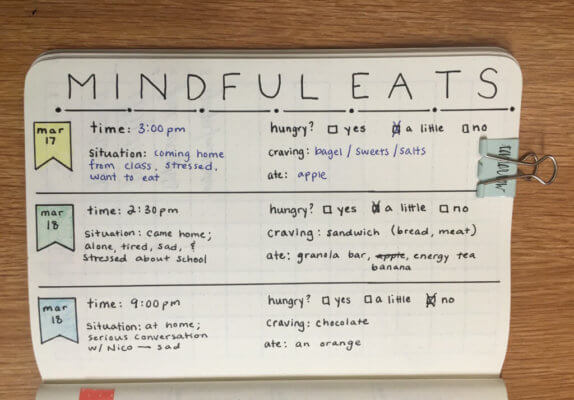
Don’t forget to make space for the other things you consider important. If you want to practice mindfulness or meditation, make note of that practice in your bullet journal. That way you can validate that commitment and help make it something you want to return to. Maybe you just want to make a list of all the books you’ve read in 2017, write down an inspirational quote or take note of everything you’re grateful for on a particular day.
Top 3 Instagram Accounts for Newbie Bullet Jouranlers
1. @breeeberry
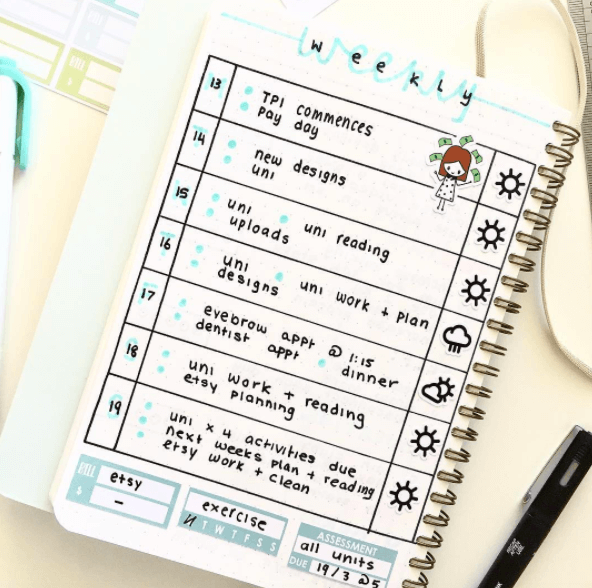
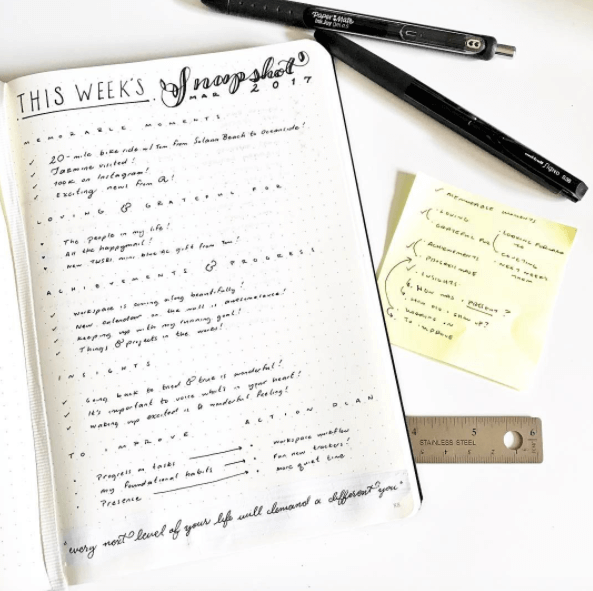
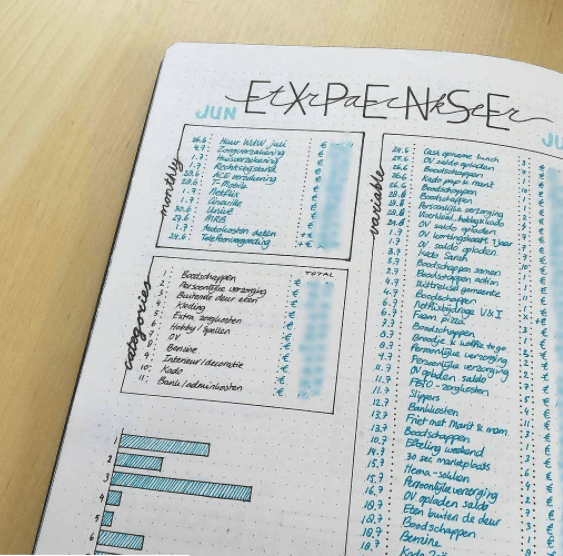
Let the bullet journal be your guide.

